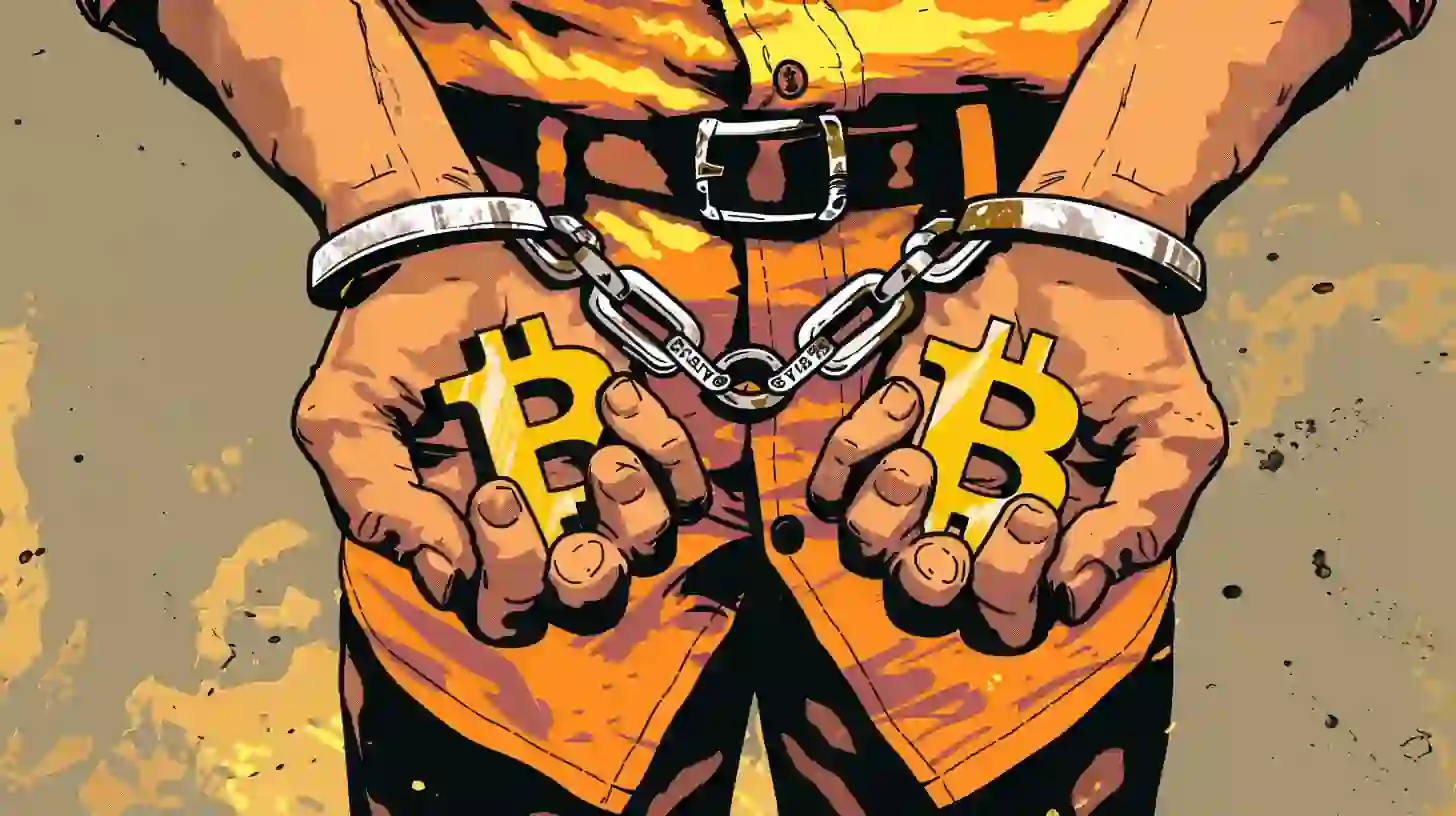October is Cybersecurity Awareness Month in the United States, and BitAML is committed to spreading knowledge and awareness about online security. Throughout this month, our blog posts will provide valuable insights, practical tips, and real-world perspectives to help individuals and organizations reduce online risks.
Previous articles in Cybersecurity Awareness Month Series:
Blog 1 of 5: Navigating Cybersecurity Regulations, Policies & Procedures for Crypto Companies
Blog 2 of 5: Apex Cybersecurity Means Fortifying Your Business with the Best
Blog 3 of 5: Ransomware, AI, and the Imperative for Robust Cybersecurity Strategies
In the realm where financial autonomy and technological convergence coalesce, Decentralized Finance (DeFi) emerges as a beacon of promise, illuminating pathways towards financial inclusivity, autonomy, and innovation. By wresting control from centralized financial entities and bestowing it upon individual participants, DeFi undeniably heralds a revolutionary stride towards democratizing financial access and operations. However, beneath the luminous allure of decentralized autonomy, a subtle abyss looms, teeming with nuanced cyber threats that threaten to destabilize this burgeoning financial utopia.
As we navigate through the intricate webs of DeFi, we find ourselves confronting an array of cyber vulnerabilities, where the very decentralization that heralds autonomy also, paradoxically, sows seeds of susceptibility to a host of cyber threats. DeFi platforms, whilst circumventing the bureaucratic red tape of traditional finance, inadvertently expose themselves to malevolent actors who exploit smart contract vulnerabilities, engage in loan attacks, and leverage other insidious strategies to manipulate and siphon funds within the decentralized digital economy. Moreover, in this decentralized space, there’s an absence of centralized safeguards like the FDIC or SEC, leaving no institutional net to catch and protect customer funds from potential losses.
Smart contracts, the quintessential bedrock upon which DeFi platforms are constructed, carry in their code both the blueprint of financial processing and, regrettably, potential gateways for exploitation. Vulnerabilities in smart contract code have historically served as conduits for notable attacks, such as the infamous DAO exploit, thereby underscoring the criticality of robust smart contract auditing and security.
Exploring the undulating abyss of specific threats, we encounter an ecosystem wherein the traditional principles of cybersecurity are cast into an arena with novel challenges, crafting a unique conundrum where safeguarding decentralized protocols demands a multifaceted approach that intertwines technological fortification with strategic, regulatory, and participatory defense mechanisms.
 The Growing Threat of Rug Pulls
The Growing Threat of Rug Pulls
Rug pulls, characterized by developers or project leads absconding with pooled funds, have frequented the DeFi landscape with unsettling regularity and severity, obliterating user funds and shattering the nascent trust being built in decentralized finance. DeFi users, in navigating through these pernicious waters, must prioritize due diligence, investigating project legitimacy, developer transparency, and code audits, thereby safeguarding their digital assets from being engulfed by the malevolent undertow of fraudulent ventures.
Red Flags that May Signal a Potential Pull
Vigilance is paramount in the DeFi space, and being attuned to potential red flags can be the difference between safeguarding assets and suffering losses:
- Anonymous Developers – While anonymity is one of the cherished principles of the crypto space, projects led by entirely anonymous teams can sometimes lack accountability.
- Lack of Code Audit – Projects that have not undergone any third-party audits, or are hesitant to share audit results, can be concerning.
- High Rewards with Little Risk – Promises of high returns with seemingly no associated risks are classic signs of potential fraud.
- Limited Project Information – Sparse details about the project’s goals, mechanisms, or overall roadmap can be indicators of a hasty setup, potentially priming for a rug pull.
- Over-hyped Community – Extreme and unwarranted enthusiasm within a project’s community, often marked by aggressive promotion and unrealistic promises, can be indicative of a potential rug pull scenario.
Tools: Rugdoc tracks the riskiest coins in real time
The SQUID Token Debacle
An illustrative and infamous instance of a rug pull is the case of the Squid Game token (SQUID) in 2021. Riding the colossal wave of popularity from its namesake Netflix series, the SQUID token was launched in November 2021. Investors, drawn by the allure of the project, pushed its value to staggering heights, leading to a market capitalization surpassing $2 billion. However, the euphoria was short-lived. The developers unceremoniously abandoned the project, evaporating the funds and leaving a trail of devastated investors clutching worthless tokens.
Avoiding Rugs on Your Journey
To shield oneself from the imminent threats of rug pulls, learning about and adhering to these protective measures are advised:
- Diligent Research – Always take the time to investigate a project. Understand its vision, analyze its whitepaper, and evaluate the team behind it.
- Engage with Communities – Join project-related forums, Telegram groups, or Discord channels. Engage with other investors and gauge community sentiment.
- Be Wary of Hype – A project solely built on hype without a robust foundation or clear utility is often a red flag.
- Diversify Investments – Avoid putting all your eggs in one basket. Diversifying can minimize the impact should one investment face a rug pull scenario.
Rug pulls are not just tales of caution but are stark realities in the world of DeFi. However, armed with knowledge, diligence, and the right resources, you can navigate the DeFi ecosystem more safely. Prioritize your financial safety; invest time in research, engage with informed communities, and always stay updated.
Related article: 5 Worst Recent Rug-pulls in Crypto
While rug pulls represent a dire threat in the DeFi sector, they are merely the tip of a perilous iceberg. Several other equally sinister attack vectors lurk beneath the surface, threatening the very foundations of decentralized finance. As we delve deeper into the murky waters of DeFi security, two specific threats warrant immediate attention: Flash Loan Attacks and Oracle Manipulation Attacks.
The Rise of Flash Loan Attacks
Flash loans in DeFi, while innovative, are not without risks. Attackers exploit these uncollateralized loan protocols by manipulating asset prices to gain quick profits in a single transaction. Such attacks can distort market prices and erode trust in DeFi. Protocols can mitigate these threats with vigilant monitoring, strict collateral checks, and algorithms that prevent price manipulations.
The Increasing Prevalence of Oracle Manipulation Attacks
Oracle manipulation attacks in DeFi target the connection between blockchain and price oracles, altering data to benefit malicious actors. These attacks can distort asset values and compromise financial trust in DeFi. Using robust data validation, multiple oracles, and time-weighted average prices (TWAPs) can strengthen defenses against such threats.
Remember, in the dynamic realm of decentralized finance, vigilance is not just an asset—it’s a necessity. And as you’ll read, how you vet and manage smart contracts, is critical to keeping your operation air tight.
The Challenges of Smart Contract Security
Navigating further, the omnipresent challenge of smart contract security surfaces, with vulnerabilities and bugs persistently lurking within the code of numerous DeFi protocols. These algorithmic frailties open the gates to exploits, jeopardizing user funds and destabilizing decentralized platforms. Rigorous smart contract audits, engaging specialized cybersecurity firms, and fostering a community-driven approach to identify and rectify vulnerabilities can enhance smart contract security, elevating the robustness of DeFi platforms amidst the throbbing pulse of cyber threats.
Smart Contract and DeFi Exploits User in a New Age of Threats
The expansive world of DeFi is ever-evolving, ushering in opportunities and, unfortunately, newer threats. Foremost among these are sophisticated exploits targeting smart contracts—often hailed as the bedrock of DeFi platforms. As malicious actors employ increasingly advanced techniques, two emergent threats are worth noting: Dynamic Exploit Injection and Automated Front-Running.
- Dynamic Exploit Injection, the AI-Driven Menace
Imagine a smart contract with the cerebral capacity of an AI. It’s not there to facilitate seamless transactions or ensure trust. Instead, it’s designed with a singular, malicious purpose: to discover and exploit vulnerabilities in other contracts or protocols. Such AI-driven contracts can autonomously adapt, learning from ongoing interactions and updates in the DeFi ecosystem. As they engage with other smart contracts, they constantly search for weak points—chinks in the armor—and when found, they strike, often resulting in substantial financial losses.
- Automated Front-Running via Predictive Malfeasance
Front-running, a nefarious tactic where transactions are intercepted and exploited for gain before they’re processed, isn’t new. However, when AI comes into play, this tactic evolves into something far more potent. By leveraging AI’s predictive prowess, malicious entities can analyze patterns, scrutinize mempool transactions, and assess market conditions. With this wealth of data, the AI can accurately predict and automatically execute lucrative front-running attacks in DeFi. This not only compromises the integrity of transactions but can also destabilize the very market dynamics.
Staying Vigilant in a Dynamic Landscape
As the boundaries of technology and malfeasance push further, it’s imperative for DeFi participants to remain informed and vigilant. The stakes are high, and the threats, though technologically marvelous, are perilous. Remember, in this ever-shifting financial terrain, knowledge remains the most potent armor against emerging threats.
The Lack of Regulation in DeFi
The spectral presence of minimal regulation within the DeFi space amplifies its vulnerability to cyber threats, with the absence of standardized oversight and accountability frameworks enhancing the allure for malicious actors. Although traditional regulatory frameworks grapple with the decentralized nature of DeFi, fostering self-regulatory practices, community-driven governance, and standardized cybersecurity protocols can fortify the DeFi space against malevolence, even in the absence of formalized regulatory structures.
Start Building Your SOTA Shield
Embarking upon your journey through the dynamic yet treacherous terrains of DeFi necessitates the forging of your state of the art (SOTA) shield against pervasive cyber threats. Utilize advanced security tools, engage in vigilant research, prioritize platforms that emphasize security and transparency, and foster an incessant commitment to safeguarding your digital assets against the multifaceted cyber threats that resonate within the abyss of decentralized finance.
One hacker attack can ruin a brand forever.
If you’re interested in learning where you stand when it comes to cybersecurity, we can help.
Dedicated cybersecurity is pivotal in the cryptocurrency space. BitAML provides unrivaled expertise in crafting top-tier security consulting and compliance solutions tailored to cryptocurrency endeavors. Drawing from a vast understanding of cryptocurrency systems, our team is poised to elevate your security and compliance protocols. Contact us today to see how BitAML can redefine and enhance your cybersecurity and compliance framework.


